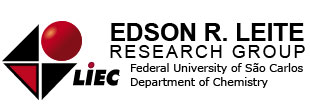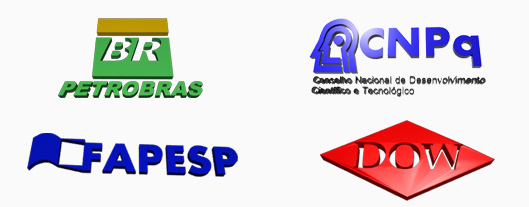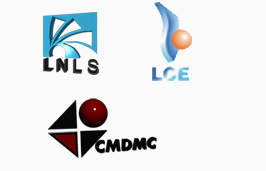PROF. DR. EDSON ROBERTO LEITE
Education
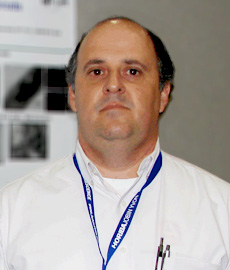
Undergraduation
Undergraduation in Materials Engineering- Universidade Federal de São Carlos (Brazil, August 1983-August 1988).
Graduation
M.SC in Materials Science and Engineering, Universidade Federal de São Carlos (Brazil, September 1988-August 1990) .
Title: “Novo modelo de degradação de varistores de ZnO”
Advisor: Prof. Elson Longo da Silva
Ph.D.
in Materials Science and Engineering, Universidade Federal de Sao Carlos (Brazil, September 1990- October 1993)
Title:
“Síntese de SrTiO3 via precursores poliméricos e sua sinterização”
Advisor:
Prof. Jose Arana Varela
Professional Activities
Present position (since May 2006)
Professor of Chemistry, Universidade Federal de São Carlos, São Carlos, SP, Brazil
January 1993 – April 2006
Associate Professor of Chemistry, Universidade Federal de São Carlos, São Carlos, SP, Brazil
March 1998-February 1999
Visiting Professor of Materials Science and Engineering, Lehigh University, Bethlehem, PA, USA
October 1988-May 1992
Development Engineer - Electrical and Telecommunication Products Group - 3M of Brazil (Sumare, São Paulo, Brazil)
Main Achievements
Scientific Results
1996 – Densification of Tin Oxide Ceramics
The uses of polycrystalline SnO2-based ceramics, up to this study, was largely limited by the poor densification of this oxide that leads to its use primarily in highly porous devices such as gas sensor. In 1996 we discovery that the addition of small concentration of CoO and MnO2 (concentration as low as 0.5 mol%) onto SnO2 promote densification of this oxide up to 99% of the theoretical density. Experimental evidence indicates that these dopants promote the densification of SnO2 by solid-state sintering. This discovery was published in the Journal of the American Ceramic Society and it has more than 85 citations. The high densification obtained for the SnO2 was fundamental for the developments of new electronic ceramics devices based on this wide band gap semiconductor such as varistor (a non ohmic resistor) as well as in the utilization of this oxide as high performance refractory for the melting of optical grade oxides glasses.
2000, 2002 – Particle size control and Gas Sensor
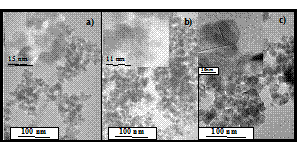 Several technological and scientific phenomena in material science are directly related to particle size. In some cases, as in catalyst material and gas sensor, it is desirable to produce materials with nanometer-scale structures to obtain specific properties. However, it is very difficult to maintain the nanometer-scale structure of a material when it is subjected to heat treatments.
Several technological and scientific phenomena in material science are directly related to particle size. In some cases, as in catalyst material and gas sensor, it is desirable to produce materials with nanometer-scale structures to obtain specific properties. However, it is very difficult to maintain the nanometer-scale structure of a material when it is subjected to heat treatments.
In the first year of the 21st we developed a new procedure to process SnO2 nanoparticles with good gas sensor properties based on the particle size control by using additives (transition metal oxides and rare earth oxides) to control nucleation and growth during the synthesis. This nanometric-size tin oxide showed high thermal stability against particle growth at high temperature (from 400oC to 900oC). This development was firstly published in the Advanced Materials in 2000, where we described the good gas sensor property of this modified SnO2 and in 2002 we published a new paper, also in the Advanced Materials, where we described the high thermal stability of the rare earth doped SnO2 against particle growth at high temperature. These two papers are well cited in the literature. The first paper published in 2000 has more than 95 citations and the paper published in 2002 has more than 40 citations.
2000 – Synthesis of amorphous metal oxides by polymerizable complex method
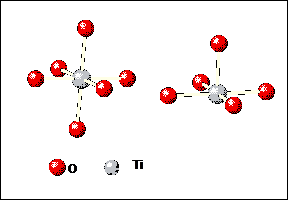
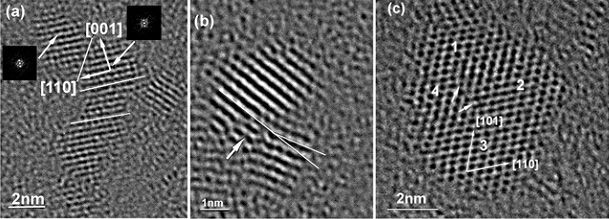 The polymerizable complex method is a chemical synthesis route which allows to synthesize nanoparticles and thin films of complex oxides (such as PbTiO3, SrTiO3, and others). In 2000 we were studying the crystallization process of PbTiO3 using Raman spectroscopy and just by chance we discovered that this material in the amorphous state has a strong visible photoluminescence at room temperature. This discovery was published in the Applied Physics Letters and received special interest since the photoluminescence behavior was reported in a disordered material and this property was associated to electronic states related to the structural disorder. This publication has received more than 90 citations so far.
The polymerizable complex method is a chemical synthesis route which allows to synthesize nanoparticles and thin films of complex oxides (such as PbTiO3, SrTiO3, and others). In 2000 we were studying the crystallization process of PbTiO3 using Raman spectroscopy and just by chance we discovered that this material in the amorphous state has a strong visible photoluminescence at room temperature. This discovery was published in the Applied Physics Letters and received special interest since the photoluminescence behavior was reported in a disordered material and this property was associated to electronic states related to the structural disorder. This publication has received more than 90 citations so far.
2003, 2005 – Oriented Attachment Mechanism
A detailed analysis of the crystal growth mechanism during the synthesis process is fundamental to control the size and shape of nanocrystals and anisotropic nanostructures. The oriented attachment (OA) mechanism originally proposed by Banfield and Penn (Science 1998, 281, 969-971) is a process involving the self-organization of adjacent nanocrystals and coalescence. The number of materials obtained by the OA process has been growing rapidly and has become an attractive and important form of processing nanomaterials with anisotropic structure. In 2003 we discovered, by combining high resolution transmission electron microscopy and theoretical calculation, that this mechanism is related to the collision rate among the nanocrystals in colloidal suspension and to the reduction of surface energy aimed at minimizing the area of high-energy faces. This find was published in 2003 in the Appl. Phys. Letter magazine and received special interest because we have shown that the OA mechanism occurs at room temperature, suggesting very low or even a zero kinetic barrier. This paper has more than 50 citations. In 2005 we published the first analytical quantitative kinetic model to describe the OA mechanism. In this model we considered the nanocrystal as molecules and we deduced an analytical equation that described the nanocrystal growth process. This model was published in the ChemPhysChem magazine and was well accepted by the scientific community. In fact this article is considered the first publication that describes the OA mechanism as a statistic process. This article has over 25 citations.
Scientific Policy
Basically, my scientific plans of action are based on three points: interdisciplinary research, work in a group formed by several laboratories and strong interaction with private companies. The materials science research is by itself an interdisciplinary theme. An important characteristic of my career is to work in several research topics simultaneously, as well as in a group formed by different laboratories. This kind of interdisciplinary research and interaction allowed me to obtain a rapid growth in terms of publications and citations. At the present time, I have published more than 290 papers and more than 3000 citations, with an h-index of 28. In the last 14 years, I have supervised more than 15 PhD students. This remarkable scientific production was recognized in 2006 by the Elsevier and CAPES (Brazilian Science Foundation Agency) with the Scopus Prize. This strategy allowed me to build a laboratory with very good facilities with up to date equipments.
Another characteristic of my career is a strong interaction with private companies. This interaction started with the development of projects related to products and innovations, such as the developments of soft graphite with high mechanical strength for application in pencil (this project was supported by the Faber-Castell company). More recently we have started a new level of interaction with private companies, obtaining funds to support the development of scientific projects (basic research in materials science). In this new context, we can point out two projects: the development of the molecular composite sponsored by the Dow Chemical (USA) and the development of nanostructured gas sensors sponsored by the Petrobras (Brazil).
In 2004 we started a research program to explore the use of nanostructured materials in alternative energy devices. This program began with the organization of a symposium (symposium S - Nanostructured Materials for Alternative Energy Devices) in the 2004 Material Research Society Spring meeting (San Francisco CA). In 2005 we edited and published the proceedings of this symposium and this year (2008), we edited a book (entitle: “Nanostructured Materials for Electrochemical Energy Production and Storage”) related to this topic, that will be published by the Springer (New York, NY). For the next years, we intend to keep exploring this research theme, particularly, the use of nanostructured materials for solar energy and hydrogen generation.
Scientific Prizes
1 - 1999 Ceramographic Competition. Third Place in the Microanalysis Category.
American Ceramic Society, Indianapolis, USA, May 1999;
2 – Scopus Prize. For the remarkable scientific production.
Elsevier (Latin America)/CAPES(Brazil), Brasília DF, Brazil, 2006.
Fellowships
1 – 1984 to 1988 . São Paulo State Foundation (FAPESP- São Paulo, Brazil)) Undergraduate Fellowship;
For the development of scientific research during my under-graduation.
Obtained Fund: US$ 9.000.00;
2 – 1998 to 1999. FAPESP Visiting Professor Fellowship
For the development of research related to the growth of ferroelectric single crystal from a polycrystalline matrix.
Lehigh University, Bethlehem PA, USA
Obtained Fund: US$ 40,200.00
3 – 1995-2009. CNPq (Brazilian Foundation, Brasilia,DF, Brazil)
For the remarkable scientific production.
Obtained Fund: US$ 72,000.00
Scientific production
Main Publications
1 – J.A.Cerri, E.R. Leite, D. Gouvea, E. Longo and J.A. Varela,”Effect of Cobalt(II) oxide and Manganese(IV) oxide on the sintering of tin(IV) oxide”, J. Am. Ceram. Soc. 79, 3, 799-804 (1996).
2 - P.S. Pizani, E. R. Leite , F.M. Pontes, E.C. Paris, J.H. Rangel, E.J. Lee, E. Longo, P. Delgado and J.A. Varela “Photoluminescence of disordered ABO3 perovskites”, Appl.Phys. Letters, 77 (6), 824-826 (2000).
3 - E.R. Leite, I.T. Weber, E. Longo and J.A.Varela, “A New Method to Control Particle Size and Particle Size Distribution of SnO2 Nanoparticles for Gas Sensor Applications”, Adv. Mater. 12 [13], 965-68 (2000).
4- ER Leite, NLV Carreno, E Longo, FM Pontes, A Barison, AG Ferreira, Y Maniette, JA Varela, “Development of metal - SiO2 nanocomposites in a single-step process by the polymerizable complex method”, Chemistry of Materials, 14 (9): 3722-3729 (2002).
5 – E.R. Leite, A.P. Maciel. I.T. Weber, P.N. Lisboa filho, E.Longo, C.A. Paiva-Santos, A.V.C. Andrade, C.A. Paskocimas, Y. Maniette and W. H. Schreiner, “Development of Metal Oxide Nanoparticles with High Stability Against Particle Growth Using a Metastable Solid Solution”, Adv. Mater., 14 [12], 905-908, (2002).
6 - F.C. Fonseca, G.F. Goya, R.F. Jardim, R. Muccillo, N.L.V. Carreno, E. Longo, E.R. Leite “Superparamagnetism and magnetic properties of Ni nanoparticles embedded in SiO2”, Physical Review B, 66 (10), Art. No. 104406 (2002).
7 – E.R. Leite, TR Giraldi, FM Pontes, E Longo, A Beltran, J Andres, “Crystal growth in colloidal tin oxide nanocrystals induced by coalescence at room temperature“, Appl. Phys. Letters, 83 (8): 1566-1568, (2003).
8 - EJH Lee, C Ribeiro, TR Giraldi, E Longo, Leite ER, JA Varela, “Photoluminescencia in quantum-confined SnO2 nanocrystals: Evidence of free exciton decay” Appl. Phys. Letters, 84 (9), (2004).
9 - E.R. Leite , F.L. Souza , P.R. Bueno, S. de Lazaro, E. Longo “Hybrid organic-inorganic polymer: A new approach for the development of decoupled polymer electrolytes” Chemistry of Materials 17 (18): 4561-4563 (2005).
10 - E.J.H. Lee, C. Ribeiro, E. Longo, E.R. Leite “Oriented attachment: An effective mechanism in the formation of anisotropic nanocrystals”, Journal of Physical Chemistry B, 109 (44), 20842-20846 (2005).
11 - C. Ribeiro, E.J.H. Lee, E. Longo and E.R. Leite, “A Kinetic Model to Describe Nanocrystal Growth by the Oriented Attachment Mechanism”, ChemPhysChem, 6, 690-696, (2005).
12 - M. Godinho, E. Longo, E.R. Leite, R. Aguiar “In situ observation of glass particle sintering”, Journal of Chemical Education, 83 (3), 410-413 (2006).
13 – A.J. Chiquito, A.J.C. Lanfredi, R.F.M.Oliveira, L.P. Pozzi, E.R. Leite, “Electron dephaing and weak localization in Sn doped In2O3 nanowires” NanoLetter, 7[5], 1439-1443 (2007).
14 - C. Ribeiro, C. Vila, J.M. E de Matos, J. Bettini, E. Longo, E.R. Leite “Role of the oriented attachment mechanism in the phase transformation of oxide nanocrystals”, Chemistry-A European Journal, 13 (20), 5798-5803 (2007).
15 - M. Godinho, C. Ribeiro, E. Longo, E.R. Leite “Influence of microwave heating on the growth of gadolinium-doped cerium oxide nanorods”, Crystal Growth & Design, 8 (2), 384-386 (2008).
Citation Index (ISI – Institute for Scientific Information)
Total Number of Published Articles: 310
Total Number of Citations: 3466
h-index: 29
Average citation per article: 11.18
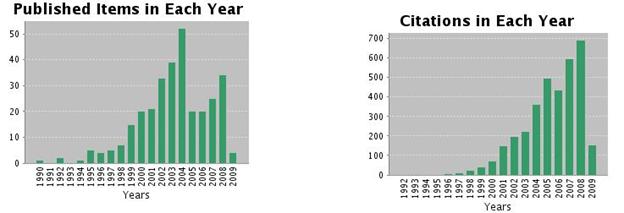
Research Grants:
“Synthesis of Molecular Composite base on Polyurethane”
Funding Agency: FAPESP (São Paulo State Foundation, São Paulo, Brazil)
Period: 2007-2009.
Obtained Fund: US$ 80,000.00.
“Nanostructured Materials: Synthesis and Characterization”
Funding Agency: FAPESP (São Paulo State Foundation, São Paulo, Brazil) (03/11936-5).
Period: 2003-2005.
Obtained Fund: US$ 120,000.00.
“Development of Nanostructured Metal Oxide Gas Sensor”
Funding Agency: FAPESP (São Paulo State Foundation, São Paulo, Brazil) (00/03209-8).
Period: 2000-2002.
Obtained Fund: US$ 100,000.00
"Crystallization and Densification of Ceramics Thin Films”
Funding Agency: FAPESP (São Paulo State Foundation, São Paulo, Brazil) (96/19748-0).
Period: 1996-1998.
Obtained Fund: US$ 49,000.00
“Development of Nanostructured material for photoelectrochemistry device”
Found Agency: CNPq (Brazilian Foundation, Brasilia,DF, Brazil) -CT Energia (504525/2004-2)Period: 2004-2005.
Obtained Fund: US$ 150,000.00
“Eletrochromic Nanostructured Materials”
Found Agency: CAPES(Brasilia,DF-Brazil)/DAAD(Bonn, Germany) (202/05)Period: 2005-2006.
Obtained Fund: US$ 12,000.00
“Developments of Zirconia nanocoatings for Catalysis Applications”
Funding Company: Petrobras/FAI (914*6).Period: 2006-2008.
Obtained Fund: US$ 150,000.00
“Development of Nanostructured Gas Sensors”
Funding Company: Petrobras/ANP/FAI (1200*5)Period: 2007-2010.
Obtained Fund: US$ 1,700,000.00.
“Development of Graphite for Pencil”
Funding Company: Faber Castell/FAI (914*5).Period: 2002-2004
Obtained Fund: US$ 75,000.00
“Development of Molecular Composite”
Funding Company: Dow Chemical/FAI (914*8)Period: 2007-2009.
Obtained Fund: US$ 80.000,00

